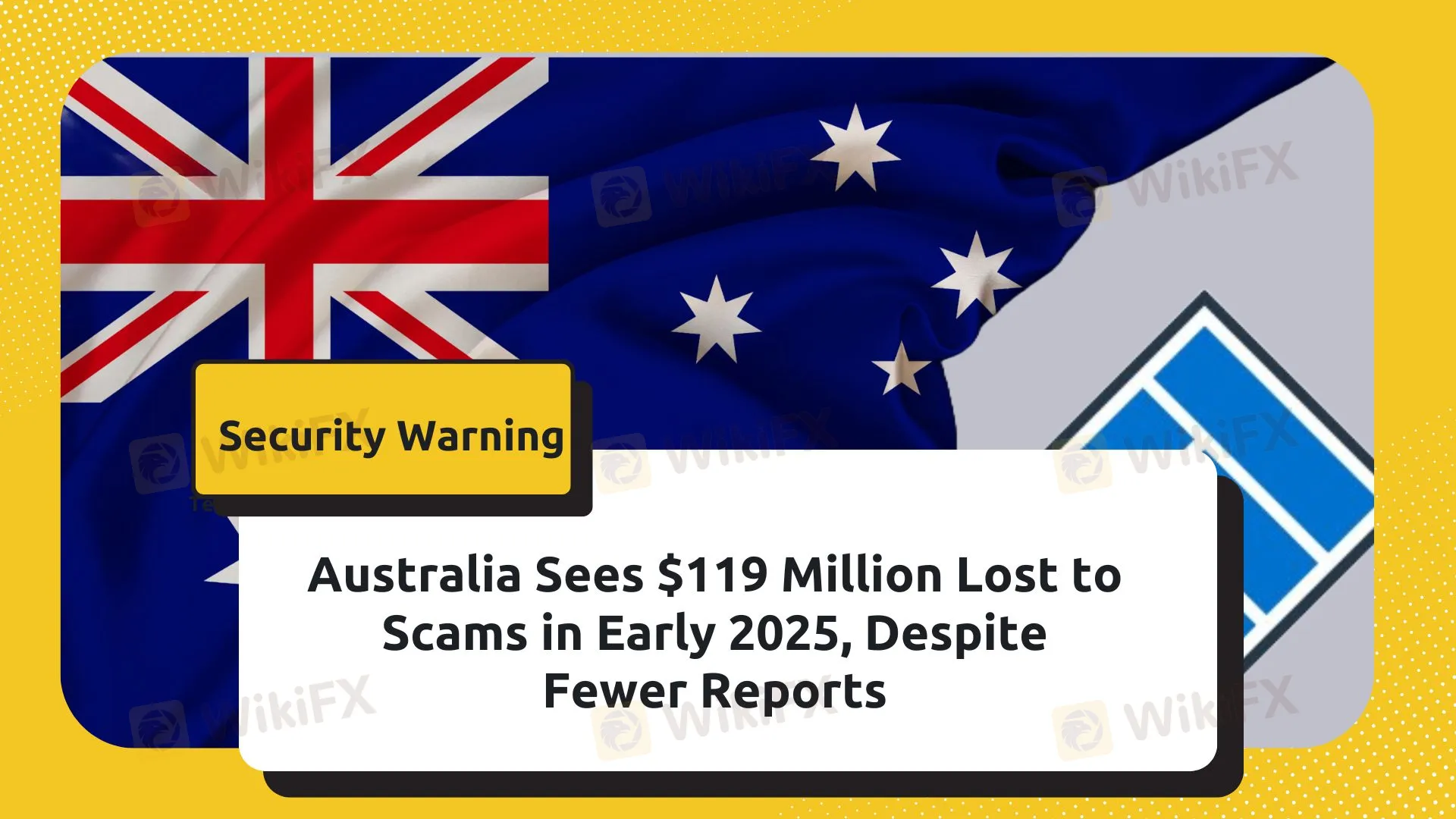简体中文
繁體中文
English
Pусский
日本語
ภาษาไทย
Tiếng Việt
Bahasa Indonesia
Español
हिन्दी
Filippiiniläinen
Français
Deutsch
Português
Türkçe
한국어
العربية
Australia Sees $119 Million Lost to Scams in Early 2025, Despite Fewer Reports
Abstract:Scam-related financial losses in Australia have surged in the first four months of 2025, reaching nearly $119 million, even as the number of reported incidents declined.

The latest data from the National Anti-Scam Centre and Scamwatchsuggests that while Australians are reporting fewer scams, each case is proving more financially damaging.
Investment Scams Still on Top
Investment fraud remains the most financially devastating category, accounting for over $59 million, or more than half of total losses. These scams typically involve false promises of high returns with minimal risk—an approach that continues to lure victims despite growing awareness campaigns.

Although investment scam losses were down slightly by 1.4% compared to the same period last year, the sheer volume of money lost shows that this type of fraud remains a persistent and costly threat.
Phishing and Social Media Scams on the Rise
Phishing attacks—where scammers pose as banks, government agencies, or well-known businesses—have seen a dramatic surge. Reported losses from phishing scams almost tripled, climbing from $4.6 million in early 2024 to $13.7 million in 2025. These scams often begin with deceptive emails or text messages designed to extract sensitive personal information.
Social media has also become a major hunting ground for fraudsters. Reports of scams via platforms like Facebook and Instagram rose by nearly 50%, with total losses in this category reaching $23.4 million. Fraudulent investment ads and impersonation schemes are among the most common tactics used.
Phone Scams Decline, But Damage Persists
Phone scams saw a modest drop in frequency—down 11%—but still caused $25.8 million in losses, making them the most damaging method of contact overall. While this decline suggests growing public caution, phone-based fraud remains a major source of financial harm.
Seniors Hit Hardest
Australians aged 65 and older suffered the most significant losses, totaling $33.1 million. Meanwhile, individuals aged 25 to 44 reported the highest number of incidents, suggesting younger users may be more willing to report while older victims face deeper financial impact.
Despite an overall decline in scam reports, the increase in financial loss per case signals a troubling trend. Scammers are evolving, using more convincing tactics and targeting victims across digital channels.
Disclaimer:
The views in this article only represent the author's personal views, and do not constitute investment advice on this platform. This platform does not guarantee the accuracy, completeness and timeliness of the information in the article, and will not be liable for any loss caused by the use of or reliance on the information in the article.
Read more

5 Cons of DB Investing Broker You Must Know
It's always advisable to read online review articles about forex brokers you are thinking to Invest your money with. The forex market has become increasingly unsafe due to the rise of fraudulent brokers. Review articles help you spot scam brokers and protect your money. Read this important article about DB Investing to stay fraud alert.

iForex - Where Withdrawal Denials, High Spread & Scams Spoil Your Forex Trading Mood
Are high spreads charged by iForex disallowing you to make profits? Do you feel that you will never be able to withdraw from iForex? It's nothing new! Read this exposure story where we have highlighted complaints from several investors.

Scam Alert: Cloned Broker Scams on the Rise
Reputed authorities like the FCA have issued warnings against brokers who act genuine but are actually fake brokers. They copy details such as logos, names, branding, and sometimes even employee appearances to trick investors and steal money from them.

Fraud Alert: Don’t Trust These Firms, SC Malaysia Warns
Investors, Pay Attention! This is a serious warning from the Securities Commission Malaysia against 5 scam brokers operating in the forex market without a legal license. Here is the list of 5 fake brokers you must avoid.
WikiFX Broker
Latest News
Forex Hedging Strategies - Calming You Amid Market Chaos
Key Events This Week: ISM, Trade Balance And More Earnings
What Is Forex Currency Trading? Explained Simply
ASIC Regulated Forex Brokers: Why Licensing Still Matters in 2025
A Beginner’s Guide to Trading Forex During News Releases
Ultima Markets enters the UK and gains the FCA license
LSEG Announces £1 Billion Share Buyback Program
SEC Lawsuit Targets Real Estate Fraud Scheme by Joseph Nantomah
SkyLine Judge Community: Appreciation Dinner Successfully Held in Malaysia
Interactive Brokers: A Closer Look at Its Licenses
Currency Calculator


